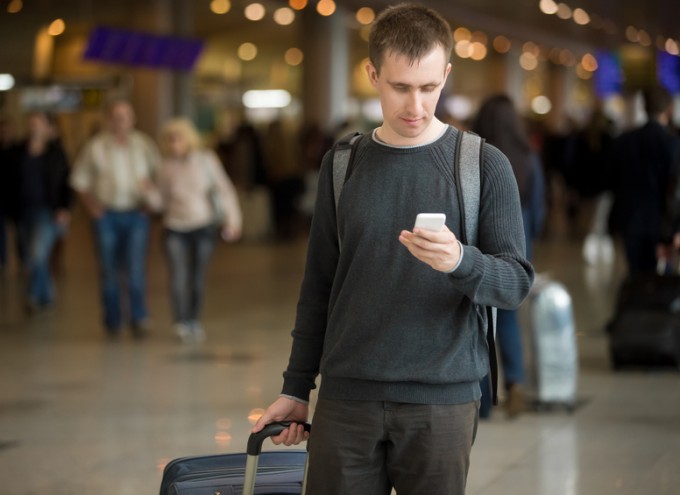Summertime is a popular time to travel, and unlike the holidays, which tend to stick to short and specific time frames, it’s the season that sees consumers opt for true leisure, which is to say, take a vacation. It can be challenging for marketers because a healthy chunk of their audience suddenly becomes moving targets. With increased consumers on the road and away from home, seasonal marketing needs to tap into the right channels the right way to actually reach this unique segment.
Segment by Unique Needs
Since the Great Recession began, consumers have held off on a lot of things due to tight budgets, even when they were important. Travel was one of the biggest things to be cut, and so the unique needs that have developed in the changing consumer landscape were easy to miss. However, consumers are ready to spend again, and as many as 70% “feel flush” enough to finally make expenditures they’ve been delaying for five years or more.
Even so, the traveling consumer journey has changed, as have the old models for selling to them. The on-demand economy is one of several factors of the new traveling consumer journey and it makes understanding your competitors’ offerings, as well as your customers’ inclinations, an imperative. For instance, it would be a major mistake to think that all hotel-seeking customers are going to be interested in the share-economy option that is Airbnb. Assumption-based marketing without defined customer segmentation equals wasted marketing dollars and missed opportunities.
Niche and Minority Concerns
As traveling for true leisure puts consumers on the road, there are certain segments and opportunities you should identify. For instance, solo travel is up 37% for first-time travelers and up 15% overall since 2013, but did you know that integrating traveling alone while seeking dating opportunities is on the rise? This could offer big opportunities in terms of unique events, experiential marketing, and amenities targeted to single travelers as an audience segment.
In an effort to hone in on the thrilling, super-active, and adventurous aspects of a vacation, developing a seasonal marketing campaign that includes the minority consumer audience could acquire some very loyal and generous spenders. And whether you’re a travel agent or a resort rep, have you considered destination marketing that caters to those with physical handicaps, language barriers or personal lifestyle needs? These consumers can often be treated with discrimination, intolerance and impatience, and taking the time to understand their needs and give them an amazing experience can go a long way for your brand.
Millennials
It can be easy to assume that Millennials have widely different travel needs, but they do have the same kinds of needs that the generations before them had at the same age. They’ll end up traveling often, but a lot of that travel is going to be work related and they look for ways to extend those events into a personal trip. Price is important, but they’re willing to spend on what they’re excited about. They value experience over all, so there’s still prime opportunities to up-sell or cross-sell, so long as your brand does it at the right time for the right things. Amenities can be a big attractor, but they prefer the unique over cookie-cutter, enough that hotels are actually changing up their formula. As you probably expect, they’re heavily influenced by whether or not their tech will work, and social media can be a heady influencer in their choices (87% turn to Facebook).
Boomers
Millennials may have become the biggest generation, but Boomers are far from down for the count. They represent 120 billion in annual leisure travel, and often have an average of four or five trips in the pipeline. In fact, 99% of them are planning to travel in 2016 alone, and while costs are a major factor for younger generations, about 60% of Boomers say that airfare prices have no affect on their plans. International “bucket list” trips are what 32% of Boomers are looking for and ,among other things, they look for warm locations (e.g., Florida or Las Vegas domestically, the Caribbean internationally), family-oriented fun, and weekend getaways. Believe it or not, Wi-Fi is hugely important to Boomers as well, and is a key search factor for 43% of those seeking hotels and 86% of those seeking holiday rental homes.
Families
Families ready to get away are influenced by brand and price (39% and 40% respectively). However, they still want options that are cost effective (just more than 70%) and at least half are looking for trips that are considered safe and dependable. Convenience and flexibility are also incredibly important (64% and 60% respectively), and other factors include luxury, quality, and uniqueness.
Families also tend to have unique needs when they set out on their research. They want their homes to stay safe while they’re gone, and they want to be sure that when they travel they (and their children especially) are going to have memorable experiences. They’ll also be looking for content about what they can expect as well as tips and life hacks for having a great trip.
Relocation Travel
While the bulk of summertime travel will be vacation oriented, it’s important to remember that not all travel at this time of year is for leisure, and we don’t mean your average business trip either. Job relocation continues to grow as the economy recovers, and these travelers will have entirely different needs than vacationers. Furthermore, academic relocation for post-graduates have similar yet unique concerns, and are often a point of stress (or even distress). Marketing to these individuals from a perspective of fun-in-the-sun simply won’t work.
Join us next week as we continue our discussion to understand the unique needs of the traveling consumer and focus on different modes of transportation, going mobile, the importance of reviews, and much more.

